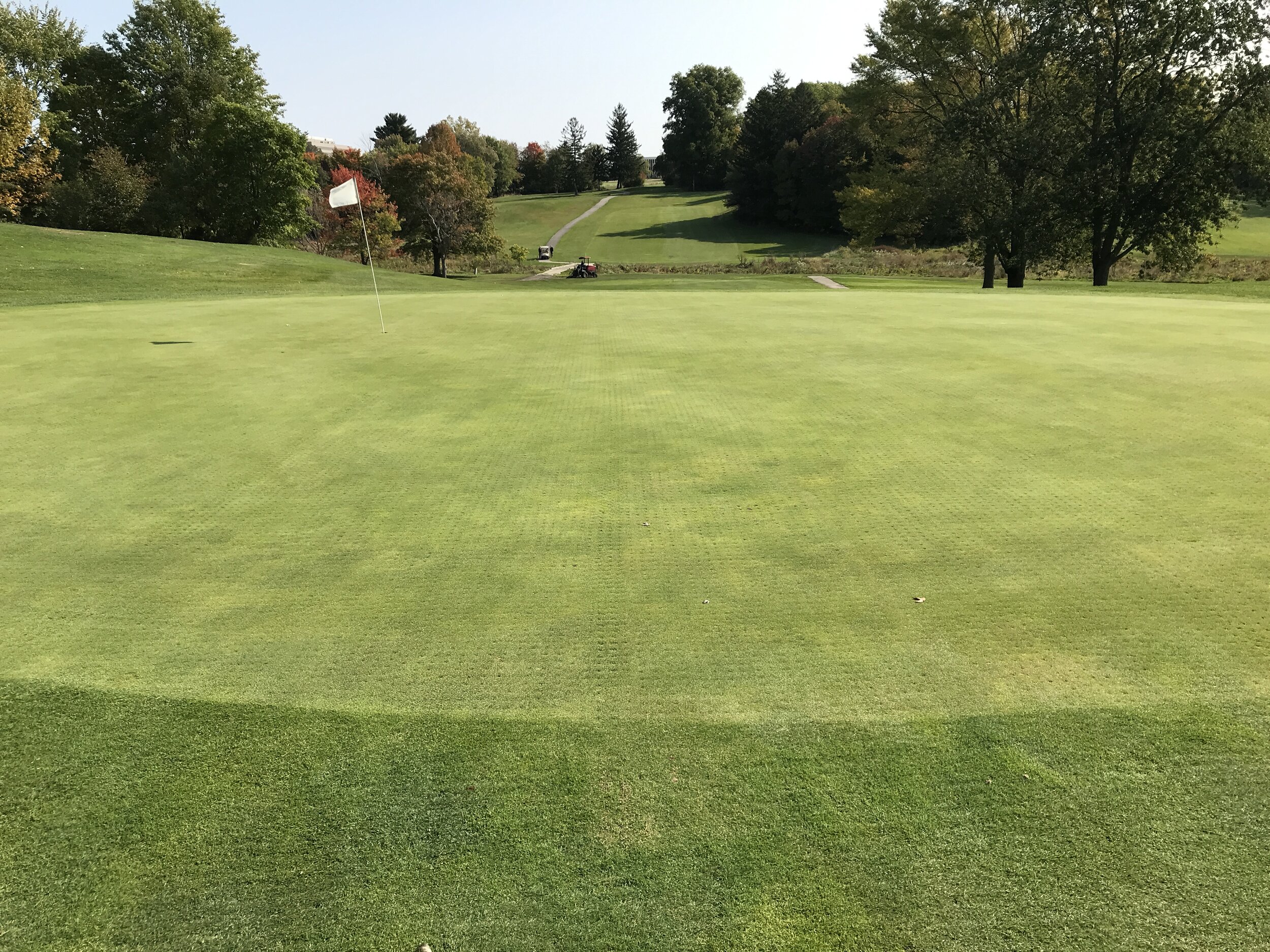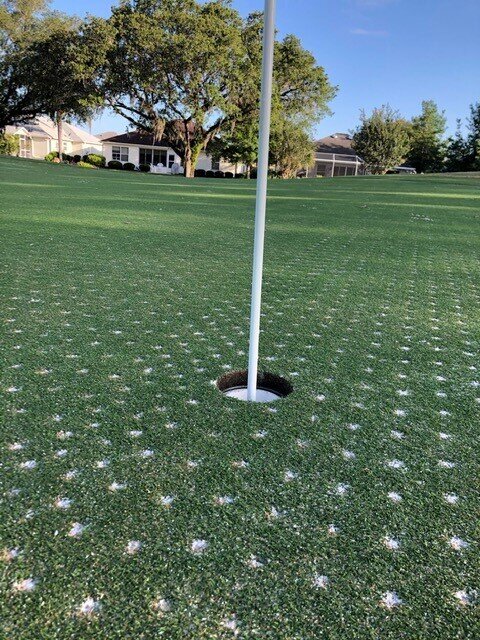Since the advent of the game, golf lovers have studied how to get better playing conditions, and that means better turf. The study of turfgrass, Turfgrass Management, is a disciplined and precise science, one which you can study at universities across the world. So, what is Turfgrass Management?
Turfgrass Management is focused on the cultivation of turfgrass and doesn’t apply exclusively to golf. Turfgrass is America’s most irrigated crop, and the most widely cultivated ornamental crop in the South. In fact, the country is blanketed with over 50 million acres of turf, and it takes a lot more than mowing to manage all that grass.

Image – Recently aerated greens.
Varieties of Turfgrass
We’ll be focusing on turfgrass management as it applies to the golf industry, and that means focusing on a few key species of grass. Turfgrasses are split into the cold season and warm-season varieties, though some may not fit perfectly into either category.
Processes and Management

Aerated greens filled with topdressing sand.
The cultivation and management of these species and more require the crossing of multiple disciplines, from agriculture to meteorology. Some of the main processes used for golf course maintenance are centred around maximizing turfgrasses natural abilities.
Aeration: The act of punching holes into your turf in order to break up thatch and compacted soil. This is a lot more complicated than randomly punching holes in the ground and can involve careful removal of soil plugs and the eventual follow-up of topdressing.
Topdressing: Applying a special mix of soils and nutrients, typically to already aerated turf, is known as topdressing. This process allows these soils and nutrients to penetrate the soil level, and mix in with existing layers.
Pest & Disease Control: Insects and disease are the number one concern for turfgrass, threatening the health and longevity of your grass as well as destroying its appearance and playability. The careful planning of other processes, as well as precise chemical application, can help attack and prevent pests and disease.
Fertilization: Turfgrass relies on various nutrients to survive and grow, and this allows maintenance professionals to control this growth. Nitrogen, phosphorous, and potassium are just some of the nutrients used to fertilize turfgrass.
Just covering the basics shows that Turfgrass Management is a precise and careful science, one which should be practiced exclusively by trained professionals. For access to a network of maintenance and management professionals, as well as the resources to follow through on your plans, trust DTE Golf®. Our unique service model allows us to prioritize quality while still controlling price. Reach a golf professional today.
